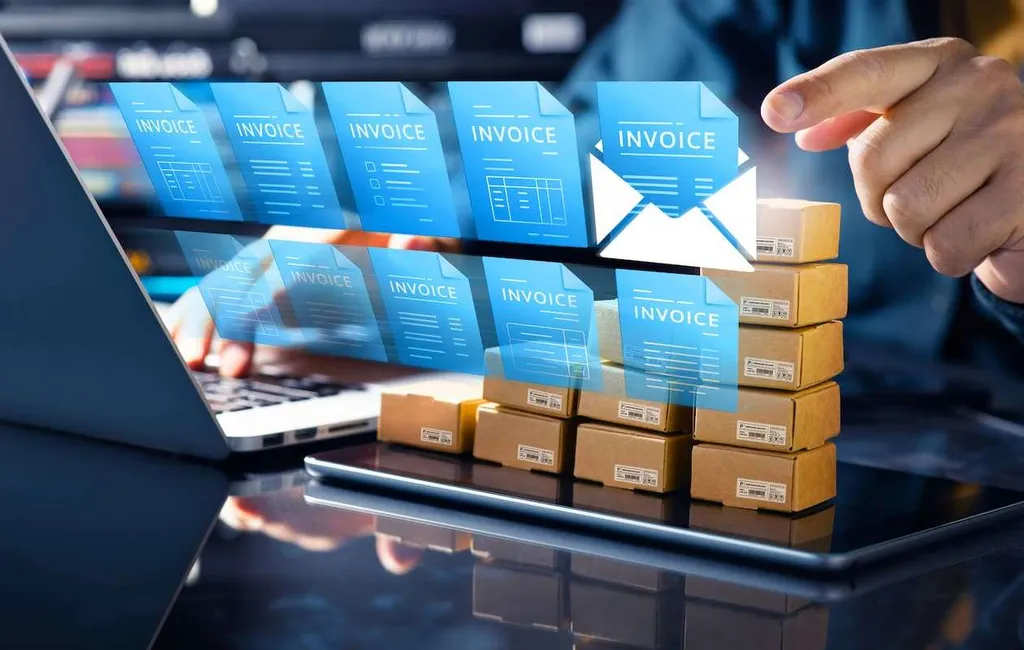In 2025, manufacturing operates in a constantly changing environment. Unstable interest rates and expenditures make long-term planning difficult, and changing consumer tastes complicate the situation. Challenges with logistics networks and shortages of raw materials make the situation worse. The search for tools to improve work efficiency and cut expenditures is more relevant than ever. Accounts payable (AP) automation is one of the main options for saving working hours and finances. This blog post will tell you about the profits and downsides of AP automation for manufacturing.
Specifics of AP Processes in Manufacturing
Manual AP processing is inefficient. Data entry errors, long approval times, or transaction delays may raise expenditures and lead to conflicts with counterparties. These difficulties arise in different industries, but manufacturing has its specifics:
- Several POs in one payment document. Large manufacturing businesses add not one purchase order (PO) to the invoice but several. It is relevant for large batches of commodities and several stages of shipment. It is crucial to analyze each PO to avoid errors in documents.
- Systematic matching with a receipt. Firms often match shipped products with an invoice and PO. This 3-way matching enables you only to pay for what you received.
- Synchronization of various aspects of the business. All workflows inside the firm must run smoothly. It is difficult to organize without enterprise software systems. Well-established AP automation will allow you to exchange data with the enterprise resource planning system (ERP) and warehouse management system (WMS) so the business can make rational decisions.
- Working with purchase-to-pay workflows. Manual matching and verification require a lot of time and resources. Modern software performs these activities automatically, ensuring the purchase-to-pay cycle is error-free.
- Compliance. Manufacturers often sell products in different countries, each with its legal framework. Ensuring AP procedures do not violate regulations, especially regarding taxes or financial reports, is a labor-intensive activity that should be automated to maintain a competitive position.
According to research, manual invoice processing expenditures range from $12 to $30. Most firms adopting AP automation for manufacturing have achieved 40% to 60% savings.
AP Automation Explained
Manufacturing accounts payable automation involves using various software and digital tools to automate all stages of invoice processing, from receipt to payment. However, some manufacturers complain this procedure is complex. It often involves synchronizing automation tools with current ERP systems to manage many invoices from different counterparties.
If standard work with AP involves manual data entry, control, approval, and execution of the transaction, special accounting software optimizes each process using artificial intelligence (AI), machine learning (ML), and cloud technology.
Key Benefits of AP Automation
Now that we know more about supplier payment automation, it is critical to understand why your manufacturing company should implement such solutions. Let’s look at the application’s strengths.
- Save working hours and finances. You may automate routine processes, including data entry, bill processing, and transaction execution, so your sales and finance team can concentrate on more creative tasks. Automation minimizes human mistakes and allows you to quickly make payments to improve relationships with partners and receive discounts.
- Transparency of the audit trail. Reliable software creates an audit trail in real time and records each operation. Auditors can quickly check information compliance and do not waste time on manual transaction verification.
- Simplified compliance management. Reliable AP software allows you to forget about compliance issues. This includes government regulations and standards adopted within the organization. The software will flag any discrepancy if you add such verification and updating of legislation to your work procedures.
- Improved relationships with counterparties. Automation will allow you to establish long-term relationships with suppliers. Instant payments and transparent transactions increase customer trust. If the payment is made on time, partners understand they will receive a stable and predictable cash flow.
- Real-time data collection with dashboard parameters and payables business intelligence (BI). Modern applications allow you to analyze information in real time. Advanced systems synchronize with ChatGPT and offer smart functions to interact with data. You may ask a virtual assistant a question to understand your firm’s expenses and AP.
AP automation software will provide optimal cash flow visibility and spend management. With such an e-system, you can receive discounts from suppliers for quick payment without expanding your financial team.
Implementing AP Automation in Manufacturing
Now that we understand the profits of AP automation for manufacturing, we must find out all the solution implementation features. There are several steps to follow.
- Assess your existing AP procedures and each interaction with accounts payable. Determine problematic areas and consider where errors most often occur. Such an assessment will help you determine your firm’s exact needs and how to meet them fully.
- Select the proper software. Finding an advanced application is key. Try to find digital solutions that offer all the critical functions, including mass payments, transaction processing, and purchase order matching with invoices. When choosing an e-system, also consider its ease of integration and scalability.
- Ensure a smooth synchronization and transition. Correct implementation requires careful planning. You must develop a transition schedule, ensure seamless integration of the innovative digital product with existing solutions, and prepare to transfer the database. Before starting the procedure, ensure your counterparty data is complete and up-to-date. It is important to maintain routine work during the transition period.
- Evaluate effectiveness. Choose parameters to determine the success of the system implementation. Most often, experts analyze the time needed to process one invoice, the number of errors, the savings in finances, and the satisfaction of all participants. By constantly evaluating such parameters, you may determine the return on investment (ROI).
Adding AP automation for manufacturing is a strategic procedure to increase the efficiency of your finance team. Such a process requires planning, careful software selection, and constant monitoring to ensure maximum savings.
What Difficulties May Arise When Adopting AP Automation for Manufacturing?
As we can see, automation provides many profits and creates difficulties, especially when we speak about manufacturers. Let’s look at the main problems so that you understand how to deal with them before the implementation starts.
- Complexity synchronization. Manufacturers often use unique ERP systems that consider their personal needs. Synchronizing automation solutions with such applications can take a lot of time and require coordinated activities of IT, finance, and sales teams.
- Dissatisfaction from staff. Automation changes the existing routine, which may cause resistance from employees who are used to doing work manually. To agree with specialists, tell them about automatization profits, including reduced workload, fewer inaccuracies, and increased efficiency. Proper training and constant support will help specialists get used to new working tools and processes.
- Adaptation to different types of invoices. Manufacturers receive payment documents from various counterparties, including PDF, paper, and virtual bills. Finding a system that can interact with all of these types is crucial.
- Confidentiality and data protection. Manufacturers deal with confidential datasets, which means they must comply with information security standards and use advanced security tools to avoid data leakage and illegal access.
Implementing accounts payable automation for manufacturing can be complex and requires the participation of various departments. Creating a system to cope with unusual tasks requires careful study and configuration. We recommend you seek help from IT specialists to minimize the risk of the above-mentioned troubles.
Future of AP Automation in Manufacturing
Regular innovations in AP automation optimize the organization’s activities and increase financial flexibility. Let’s consider the main trends we must track in the coming years.
- AI and ML are changing automation. AI-ruled systems are trained on large databases to process invoices and notice anomalies. Such manufacturing AP technology displaces the traditional rule-based system, allowing you to work with complex transactions efficiently.
- Accessibility from mobile gadgets. The ability to carry out mobile transactions changes the interaction of financial experts and automation. Such innovation allows you to track and pay bills located anywhere in the world. The company can respond to dynamic market conditions.
- Maximum security. As technology develops, security measures will also improve. The software will increasingly use advanced encryption, two-factor authentication, and constant monitoring of cyberattacks, which encourages manufacturing companies to implement AP systems.
These trends are already visible today when working with AP automation. We may only guess what we can expect in ten years.
Conclusion
Using AP automation for manufacturing is not just another stage of firm development but a complete transformation of your business. This procedure decreases the number of inaccuracies and allows you to process payment documents and implement financial ideas quickly. You can delegate manual work to an e-system that meets your goals and positively affects the firm’s activities.
BooksTime specialists will help you choose an automation solution that is created to serve the manufacturing industry. Our specialists will help you synchronize it with your current software, ensuring the effective development of your company.

















